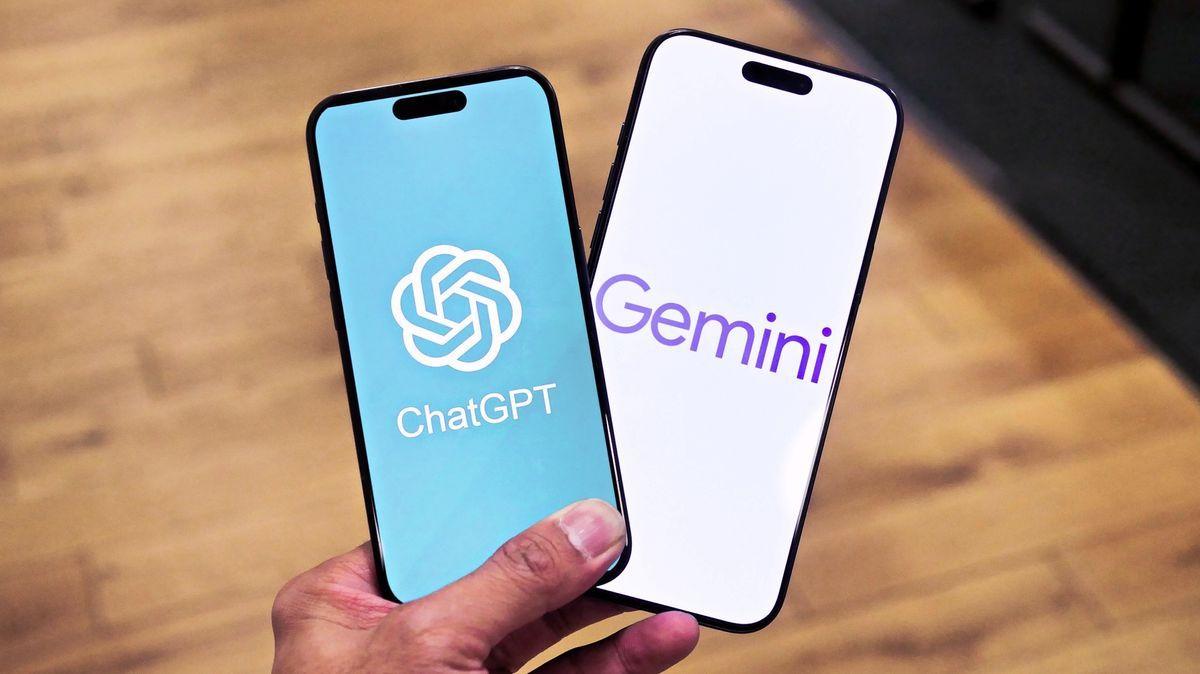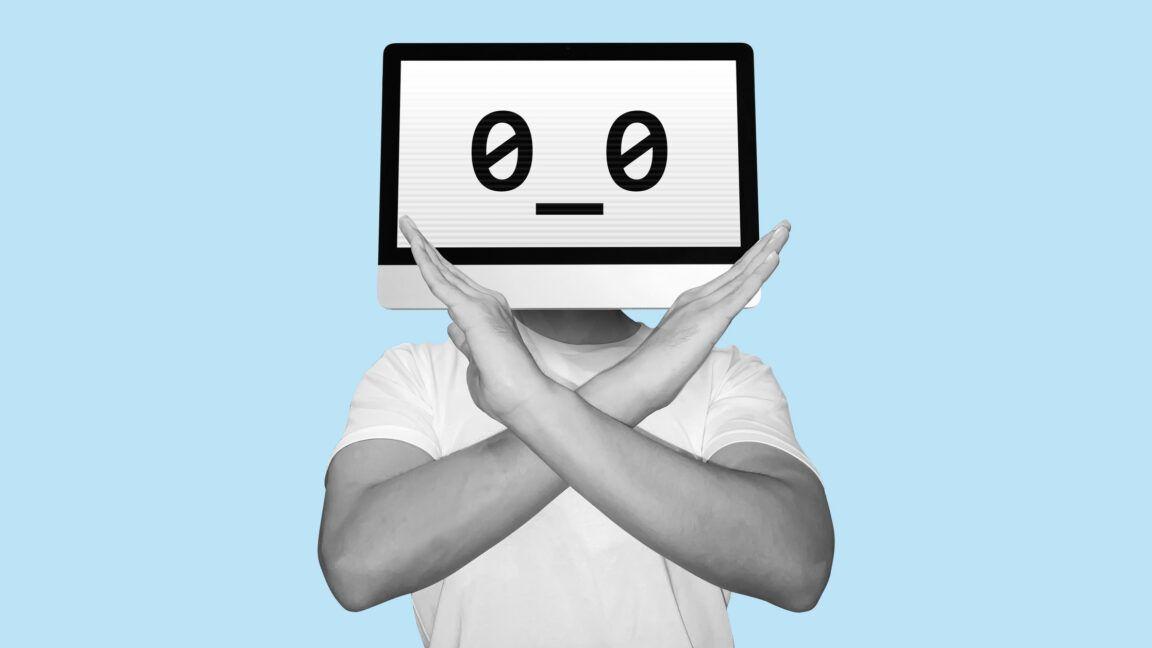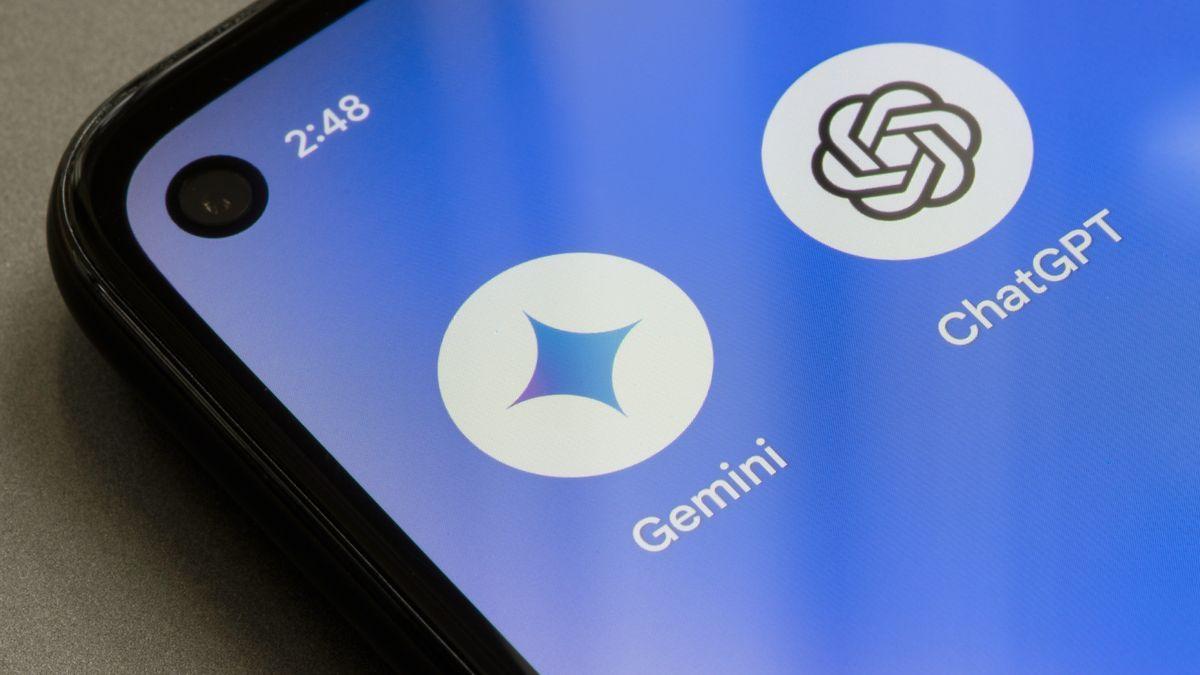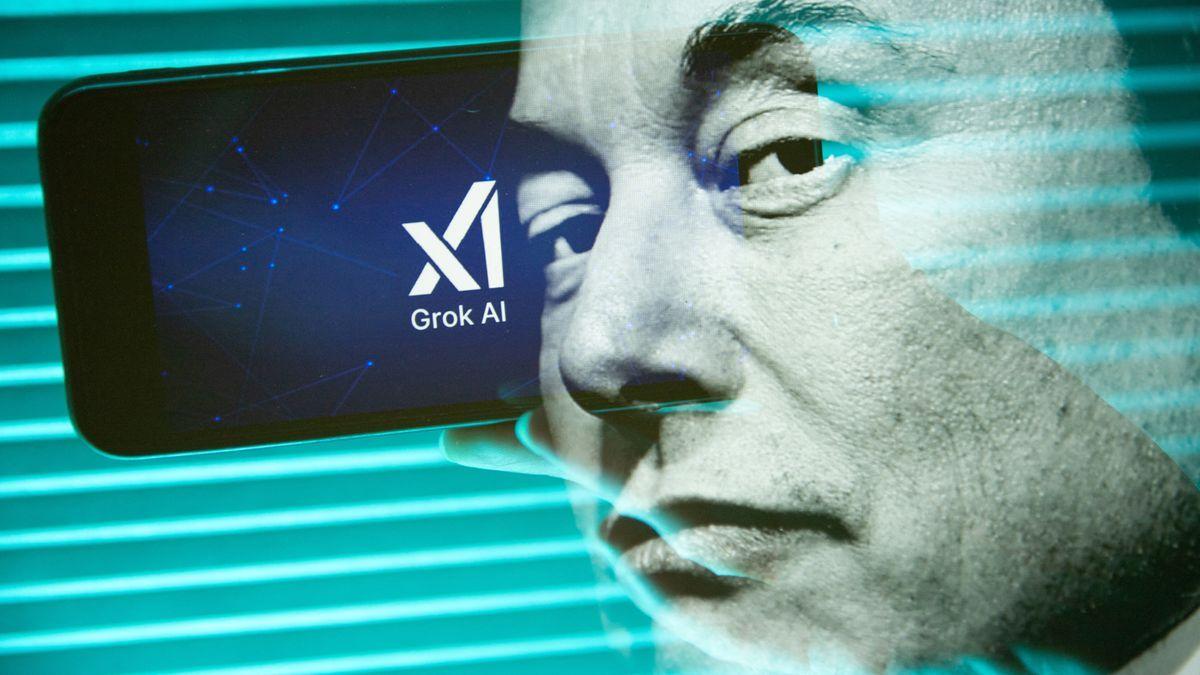ChatGPT vs Gemini: A Comprehensive Comparison of AI Capabilities
4 Sources
4 Sources
[1]
I tried ChatGPT's 7 most popular prompts with Gemini 2.5 -- here's what it got right, wrong, and weird
Ever wonder what other people actually ask ChatGPT? From job seekers and coders to curious learners, the most popular prompts sent to ChatGPT offer an interesting glimpse into how we think and solve problems. According to Google AI mode, ChatGPT attracts 400 million weekly users and processes a staggering 1 billion queries per day. Gemini, however, attracts a fraction of that, at 42 million weekly users. Based on global trends, user behavior and ChatGPT itself, I put together the top 9 types of prompts most frequently asked by ChatGPT users. I couldn't resist trying them out the competition to understand what users are missing or avoiding. So here's what happened when I had Gemini 2.5, Google's free and "smartest" model answer those popular ChatGPT queries. Prompt: "Explain quantum physics like I'm five." ChatGPT-4o kept its response short and sweet, focusing on two key concepts. Its introduction of entanglement is done in a fun and memorable way. Gemini 2.5 used multiple kid-friendly analogies (Lego bricks, toy car hiding, bathtub waves, stairs vs. ramps). The chatbot covered more quantum concepts: superposition, wave-particle duality, and quantized energy levels. The response is overall more active and playful. Comparison breakdown: If you want the simplest, most concise explanation than go with ChatGPT. But if you want a more detailed, playful, and varied explanation use this prompt with Gemini. Example: "Summarize Taylor Swift's song 'Shake it Off' in 3 sentences." ChatGPT-4o hit the core message in a simple and punchy way. It uses energetic language that matches the song's vibe. It feels conversational. Gemini 2.5 specified the issues of the song (criticism, gossip, and judgment) upfront but the polished phrasing is less engaging and reads more like a refined analysis. Comparison breakdown: For a catchy, high-energy summary, ChatGPT is the go-to chatbot. It's more playful and concise, mirroring the song's carefree attitude. For a slightly more analytical, polished take Gemini is the chatbot you want to prompt. The model was clearer about the song's conflict but still upbeat. Example: "Write a cover letter for a social media manager applying to Nike." ChatGPT-4o got to the point quickly with a strong hook while still being professional. The storytelling was brief but specific with energy that aligned better with the brand. Gemini 2.5 wrote a highly detailed and structured cover letter that clearly outlines the company's brand values. It encourages customization by adding placeholders and tips for tailoring. Comparison breakdown: If you're a job seeker looking for a ready-to-use, standout cover letter, use ChatGPT. If you prefer a detailed, customizable template than use this prompt with Gemini. Example: "Write a Python function to check if a number is prime." ChatGPT-4o efficiently and clearly developed a readable function that avoids unnecessary imports. It also included a quick demo, which developers might find helpful. Gemini 2.5 included Args and Returns for better documentation. It also explicitly adds a typical safety check. The explanation is verbose with long comments explaining the math behind the function. Comparison breakdown: ChatGPT delivers a cleaner, faster, and more Pythonic solution without unnecessary fluff so it's best for real-world uses cases where readability and efficiency matter most. Users who need detailed documentation (e.g., for a team project) or want explicit type checking would be better off using this prompt with Gemini. Example: "Rewrite the song 'Itsy Bitsy Spider' to sound more professional'" ChatGPT-4o maintained the original structure of the song but elevated the language. It also retains some of the song's rhythm so it is still nursery rhyme-like, just formalized. The tone is engaging. Gemini 2.5 offered multiple versions (formal narrative, procedural tone, cause-and-effect), which offers users flexibility. Gemini used a highly methodological vocabulary and the text is structured like a report, which felt too technical and weird overall. Comparison breakdown: ChatGPT struck a balance between professionalism and readability, which makes this prompt best for this chatbot if users want a witty, elevated response. Gemini offered multiple stylistic approaches rather than a single rewrite with hyper-formal, technical language which some users might prefer. Example: "Translate 'Hope is the thing with feathers' into Japanese." ChatGPT-4o crafted poetic phrasing that matches the original lyrical tone while overall delivering a clearer presentation. The emojis are a nice touch. Gemini 2.5 delivered a detailed breakdown of each word/phrase. The literal translation was so overly precise that the response was almost too formal. The chatbot was less poetic and gave what felt like a textbook translation. Comparison breakdown: ChatGPT prioritizes aesthetic fidelity, making the translation sound like poetry, not just a dictionary entry. Users who care about artistic impact over linguistic dissection should stick with ChatGPT. Users who prefer hyper-literal accuracy over stylistic flair and need a grammar lesson or word-by-word analysis should use Gemini. Example: "Who would win: Batman or Iron Man?" ChatGPT-4o used humor and emojis for a more entertaining response that is concise and punchy. The verdict was clear in the response. Gemini 2.5 crafted balanced arguments and was extremely thorough. The chatbot is context-aware, acknowledging that the outcome depends on circumstances (prep time, random encounter). Comparison breakdown: For an engaging and fun response that's perfect for a casual debate this is a good prompt for ChatGPT. Go with Gemini for a more comprehensive, neutral analysis with more facts and scenarios. Testing these top ChatGPT prompts through the lens of Gemini 2.5 reveals an interesting divergence in AI capabilities and user preferences. While ChatGPT often excels in delivering concise, engaging, and creatively nuanced responses, Gemini 2.5 stands out with its detailed, analytical, and contextually rich outputs. The choice between which chatbot to use for a particular prompt ultimately hinges on the user's specific needs. For quick, punchy, and aesthetically pleasing results, ChatGPT remains a strong contender. For in-depth, structured, and meticulously documented information, Gemini 2.5 proves invaluable.
[2]
I've made Gemini my primary AI tool instead of ChatGPT -- here's 5 reasons why
Not long after the public launch, ChatGPT was my go-to chatbot. I was impressed despite the frequent hallucinations of earlier models, and the novelty of Dall-E's image generation was captivating. But a lot has changed in the past few years, including how quickly Google Gemini has advanced to levels that frankly surpass OpenAI's ChatGPT models. Gemini has quickly become my daily AI tool for everything from setting daily reminders within Gmail to generating images. While I still use ChatGPT regularly, Gemini has become my preferred AI, despite the strong competition. For me, it boils down to a few key advantages: an expansive context window, seamless Google Workspace integration, access to NotebookLM Plus, and other valuable perks such as Gemini Canvas. Because Gemini has a larger context window, it is a smarter chatbot. Just yesterday, Google announced the launch of Gemini 2.5, calling the chatbot the company's most intelligent model yet. Currently with a 1 million token context window with plans to move to 2 million, Gemini 1.5 Pro already boasts a 2 million context window, significantly surpassing ChatGPT Plus's 128,000 token limit. Essentially, the larger the context window, the greater ability for the model to process extensive prompts, resulting in outputs that are more consistent, relevant and useful. This translates to Gemini Advanced being able to process and remember roughly 3,000 pages of text in a single conversation, while ChatGPT Plus handles considerably less. It is important to understand that the size of Gemini's context window can change based on the model that is being used. For example, Gemini 1.0 flash has a 1 million token context window. Choosing Gemini over ChatGPT means I can get documents summarized faster or analyze extensive datasets and receive comprehensive feedback. I can ask questions about the documents and trust that the Gemini will remember the conversation at a later time when I need to refer back to it. Both Google's Gemini Advanced and OpenAI's ChatGPT Plus are integrating AI into essential workspaces, but their approaches differ. Google deeply integrates Gemini into its Workspace suite, including Calendar, Gmail, Docs, Slides, and Sheets. While ChatGPT is partnered with Microsoft and is in their Microsoft 365 products. As a user of both Microsoft 365 and Google Workspace, I find Google's integration far more holistic. Gemini's "brain" is woven throughout the Google ecosystem, whereas Microsoft's integrations often feel like add-ons. For instance, while Copilot can summarize a Word document, Gemini can pull context from an email or presentation to tailor its summaries. This deep integration within Workspace enhances my experience. Personally, I have found Copilot to be slightly intrusive by asking if I want something edited or rephrased. Gemini lets me work until I need it. OpenAI just enhanced its image generating capabilities with a new model integrated within ChatGPT-4o. I went hands-on with it and found that the generated images are hit or miss. The enhancement promised more realistic images from simple prompts, but that wasn't entirely my experience. Yet, Gemini 2.0 Flash Experimental native image generation is so realistic that there really is no comparison to ChatGPT-4o. NotebookLM Plus is a significant draw for me. As a smart data warehouse, it transforms vast amounts of information into digestible audio elements. While the free version offers plenty for the casual user, NotebookLM Plus removes limitations on data aggregation, research and output. By generating daily virtual podcasts about everything from the news to my kids' school reports, I can get so much more done because I'm not starting at a screen reading. The ability to change the AI's response style, as well as collaboration tools, further enhance this tools' capabilities. As someone who deals with significant amounts of documents and data, I can't tell you how much time this feature has saved me. Gemini's ability to analyze images directly has been incredibly useful for everything from identifying backyard plants to reading text within a photograph. Gemini is designed with a strong emphasis on understanding and processing information from various sources, including text, images, and video. While ChatGPT is evolving in its multimodal abilities, Gemini's architecture is built to handle these diverse inputs more natively. For me, this had led to a more seamless and efficient experience and why I regularly choose Gemini instead of ChatGPT. Because Gemini is a Google product, it has very tight integration with Google Search. I have seen that edge in accessing and processing information from the web. When I'm working on a project that requires real-time info, Gemini can, in many cases, retrieve and synthesize that data very effectively. This is especially useful when I need to confirm facts, or receive summaries of current events. Because of Gemini's direct link to Google's vast information resources, I see it as a significant advantage in research and information-gathering tasks. While I use both chatbots regularly, I've transitioned from primarily using ChatGPT to Gemini to boost my daily productivity. Both models possess powerful AI capabilities, and both can access up-to-date information. However, the combination of Gemini Advanced's expansive context window, Workspace integrations, NotebookLM Plus and bundled perks have proven the best for my daily workflow, making it my primary tool.
[3]
I tested ChatGPT-4o vs Gemini Advanced with 5 AI image prompts -- and the results surprised me
Both ChatGPT and Gemini are considered among the best AI image generators out there. With both of these models, you can describe a scene and watch it come to life in seconds. But not all image generators are created equal. To see how they compare, I gave both platforms the exact same five prompts -- ranging from fantasy to photorealism -- and evaluated how each AI responded in terms of creativity, detail and how well they interpreted the brief. The results weren't always what I expected. In some cases, one tool clearly outshone the other. In others, it came down to style versus realism. Here's how each AI performed when given the same challenge -- and which one might be the better choice for your next image prompt. To make it easy to follow along, the layout is consistent throughout this piece. ChatGPT's image output will always appear on the left, and Gemini's on the right. That way, you can easily compare the two side by side and see exactly how each AI interpreted the brief. This applies to all prompts except number two, in which the image of Gemini's output is beneath ChatGPT's. Now that you've learned how ChatGPT and Gemini tackle AI image creation, why not take a look at some of our other AI articles?
[4]
I Tested and Compared ChatGPT's Native Image Gen Capabilities Against Gemini
Google and OpenAI are competing head-to-head to deliver the best native image generation model. After Google introduced native image generation in Gemini, OpenAI didn't waste time and added support for native image output for all ChatGPT users. So, to find out which AI model delivers better results, I have compared native image generation in OpenAI's ChatGPT and Google Gemini. I have tested the models for character consistency, text rendering, instruction adherence, and more in this post. I started the native image generation comparison between ChatGPT and Gemini by prompting both models to create an anime-style image. As you can see in the results below, ChatGPT 4o hit it out of the park and generated the image in classic Studio Ghibli style in one go. On the other hand, I tried multiple prompts on Gemini, but the native image generation model couldn't create an anime-style image at all. In the next test, I asked ChatGPT and Gemini to create an image showing a man explaining the concept of relativity. Thanks to the larger ChatGPT 4o model, ChatGPT produced a great image with legible handwritten text. It even captured the photographer in the reflection. However, the smaller Gemini 2.0 Flash model struggled to get the text right on the whiteboard. While Gemini successfully added "Beebom" to the man's t-shirt, it didn't capture the photographer's reflection. That said, the man in Gemini's output looks more authentic compared to ChatGPT's output. This is the best example to showcase the difference between ChatGPT and Gemini in native image generation. ChatGPT designed a beautiful menu card with perfect text rendering. It missed out on the last dish, but it followed my instructions pretty well. That said, Gemini starts to hallucinate if you throw dense information in your prompt. It has got nearly all the text wrong, with jumbled words. Following that, I asked ChatGPT and Gemini to create an infographic to explain the concept of gravity, featuring Newton as the character. It goes without saying that ChatGPT did a splendid job, both in terms of design and explaining the concept in clear, readable text. The result is so good that ChatGPT's native image generation feature can be used to create comic strips, educational books, visual guides, and more. On the other hand, Gemini has been disappointing with its result. The text and visuals don't make any sense. One thing to note is that Gemini 2.0 Flash generates an image within 3 to 4 seconds, while ChatGPT takes more than a minute to produce a single image. ChatGPT is using the larger 4o model, which uses a lot of processing power, leading to a far more coherent result. Coming to restyling images, I uploaded an image of a cactus plant in a garden and prompted both models to add some colorful flowers. In my testing, I found that ChatGPT goes overboard with each refinement. It entirely changed the look of the image after each modification. In contrast, the Gemini model maintained the consistency across multiple generations. While ChatGPT 4o is natively multimodal (built on an auto-regressive architecture), some experts believe that the native image generation feature uses a Diffusion-based decoder. While it helps in accurately rendering text, it also regenerates the image on each iteration. So it's not a pure auto-regressive model like Gemini 2.0 Flash, hence, the difference in image output after each modification. Next, I uploaded two images and asked ChatGPT and Gemini both to create an image of the woman holding the mug. Both models delivered impressive results. In fact, Gemini was a bit more creative and changed the posture as well. That said, OpenAI says ChatGPT 4o can handle up to 20 images in one prompt and leverages in-context learning to create a single, unified image. In the next test, I uploaded an image of a hallway and prompted ChatGPT and Gemini to change the point of view. Both models delivered almost similar results, but ChatGPT was closer to the original image. Gemini hallucinated and added an extra leg to the armchair. Overall, I will give this round to ChatGPT since it mirrored the opposite view more accurately. Finally, in the last test, both ChatGPT and Gemini failed to correctly render the specified time (6:30) on the wall clock. It's a recurring issue in AI image generation, as models tend to default to 10:10 due to biases in the training dataset. So, even with native image generation, OpenAI and Google have not been able to overcome this constraint in instruction following. After running a range of tests, I can confidently say that ChatGPT's native image generation is currently more advanced than Gemini 2.0 Flash. It's powered by the larger ChatGPT 4o model, which has broader world knowledge. This results in more coherent images. It perfectly renders text and follows instructions with impressive precision. In contrast, Google's experimental Gemini 2.0 Flash model is smaller, which results in faster performance. However, it often hallucinates while rendering dense text, and the results are of lower quality. What makes Gemini stand out is that it maintains consistency after each generation, which is a big advantage. We should wait for native image output support on the newly-released Gemini 2.5 Pro model which is expected to deliver exceptional performance in native image generation.
Share
Share
Copy Link
An in-depth analysis of the strengths and weaknesses of ChatGPT and Gemini across various tasks, including text generation, image creation, and integration with productivity tools.

The Rise of AI Chatbots: ChatGPT vs Gemini
In the rapidly evolving landscape of artificial intelligence, two major players have emerged as frontrunners: OpenAI's ChatGPT and Google's Gemini. As these AI models continue to advance, users and experts alike are closely comparing their capabilities across various domains
1
2
.Text Generation and Comprehension
Both ChatGPT and Gemini excel in text-based tasks, but with notable differences. ChatGPT often provides more concise and punchy responses, making it ideal for quick, engaging content. Gemini, on the other hand, tends to offer more detailed and structured outputs, which can be beneficial for in-depth analysis or customizable templates
1
.For example, when asked to explain quantum physics to a five-year-old, ChatGPT delivered a short, sweet explanation focusing on key concepts. Gemini used multiple kid-friendly analogies, covering more quantum concepts in a playful manner
1
.Image Generation Capabilities
The competition in AI image generation has intensified with both platforms now offering native image creation. ChatGPT, powered by the larger 4o model, generally produces more coherent and detailed images, especially when it comes to text rendering and following complex instructions
3
4
.Gemini's image generation, while faster, sometimes struggles with text accuracy and can produce hallucinations when given dense information. However, Gemini shows strength in maintaining consistency across multiple generations of the same image
4
.Integration and Productivity
Google's Gemini has a significant advantage in terms of integration with productivity tools. Its deep integration into Google Workspace (including Gmail, Docs, and Sheets) provides a more holistic user experience compared to ChatGPT's integration with Microsoft 365 products
2
.Context Window and Information Processing
Gemini boasts a larger context window, allowing it to process and remember significantly more information in a single conversation. This capability enables Gemini to handle more extensive prompts and datasets, resulting in more comprehensive and relevant outputs
2
.Related Stories
Specialized Features
Both AI models offer unique features that cater to different user needs. Gemini's NotebookLM Plus, for instance, transforms large amounts of information into digestible audio elements, which can be a game-changer for processing vast amounts of data
2
.Real-world Application and Accessibility
While both models have their strengths, the choice between ChatGPT and Gemini often comes down to specific use cases. ChatGPT might be preferred for quick, engaging responses or high-quality image generation, while Gemini shines in detailed analysis, Google ecosystem integration, and handling large volumes of information
1
2
4
.As these AI models continue to evolve, the competition between OpenAI and Google is driving rapid advancements in the field. Users now have powerful tools at their disposal, each with its own set of strengths, allowing them to choose the best fit for their specific needs and workflows.
References
Summarized by
Navi
[1]
[3]
Related Stories
ChatGPT 4.5 vs Gemini Pro 2.5: A Comprehensive Comparison Reveals Surprising Results
11 Apr 2025•Technology

Google's Gemini 2.0 Flash vs ChatGPT and DeepSeek R1: A Comparative Analysis of Leading AI Chatbots
08 Feb 2025•Technology

ChatGPT vs Gemini Deep Research: A Comprehensive Comparison of AI Research Tools
20 Mar 2025•Technology

Recent Highlights
1
Nvidia drops $20 billion on AI chip startup Groq in largest acquisition ever
Business and Economy

2
Meta acquires Manus for $2 billion, adding revenue-generating AI agents to its platforms
Business and Economy

3
China proposes world's strictest AI chatbot rules to prevent suicide and emotional manipulation
Policy and Regulation





